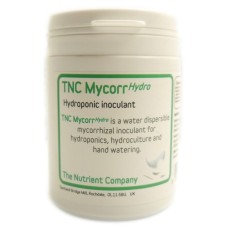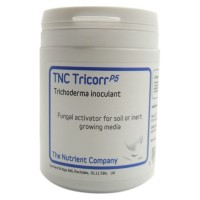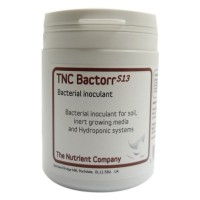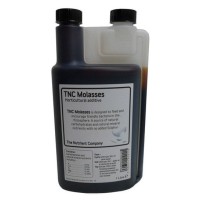TNC MycorrHydro is not a fertiliser. For the mycorrhizal colony to establish the spores must come in to contact with the roots.
Clones and cuttings
Apply rooting gel and then dip into some TNC MycorrHydro
Hand Watering, Run to waste hydroponics, AutoPot, Wilma etc
1 tsp per 5 ltr of water.
Apply as a substrate drench after transplanting and once more after 2 weeks*
Recirculating hydroponic systems – flood and drain, DWC, Aeroponics etc
1 tsp per 25 ltrs of tank water. If possible, add the desired amount to some spare tank water and apply around the roots of your plants to increase chances of establishing a mycorrhizal colony.
Repeat once more after 2 weeks*
* Once a mycorrhizal colony is established there is no need to add more TNC MycorrHydro. You may wish to supplement with bacterial additives like TNC BactorrS13 however.
Analysis
Glomus clarum
G. intraradices
G. mosseae
G. deserticola
G. monosporus
G. brasilianum
G. aggregatum
Gigaspora margareta
(6.4×104 spores/kg)
Bacillus
Bacillus subtilis
B. amyloliquefaciens
B. licheniformis
(each at 1.2×109 cfu/kg)
B. brevis
B. cirulans
B. coagulans
B. firmus
B. halodenitrificans
B. laterosporus
B. megaterium
B. mycoides
B. pasteuri
B. polymyxa
(each at 6.8×108 cfu/kg)
Rhizopogon amylpogon
R. fulvigleba
R. rubescans
R. villosuli
Laccarria laccata
Pisolithus tinctorius
Scleroderma spp
(2.6×108 spores/kg)
Trichoderma
Trichoderma hamatum
T. harzianum
T. koningii
T. longibrachiatum
T. reesei
(each at 1.3×108 cfu/kg)
Soluble Humates, Soluble natural marine algae derivatives (from Ascophylum nodosum)
Including :- trace elements, natural plant hormones, amino acids and vitamins.










